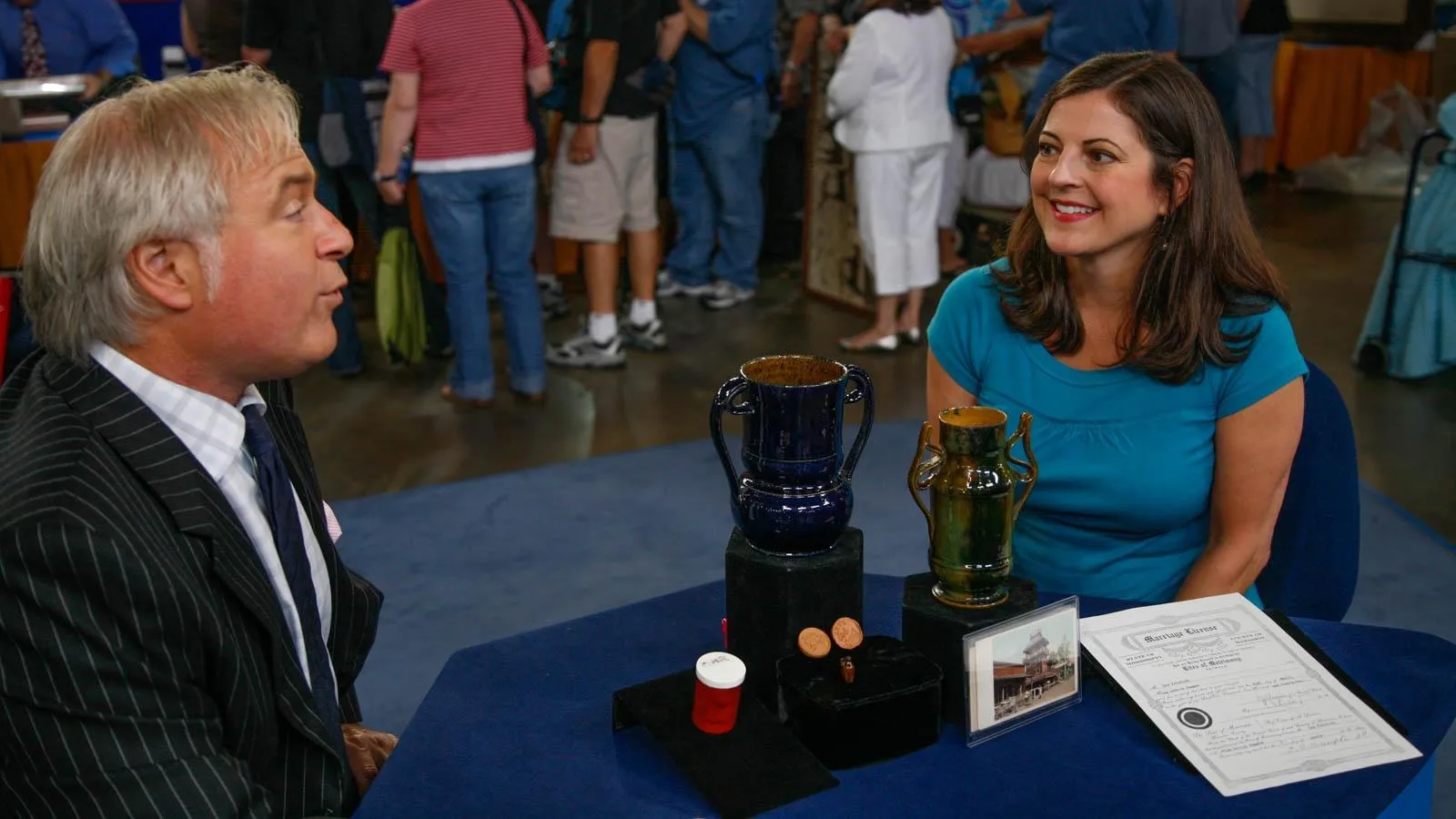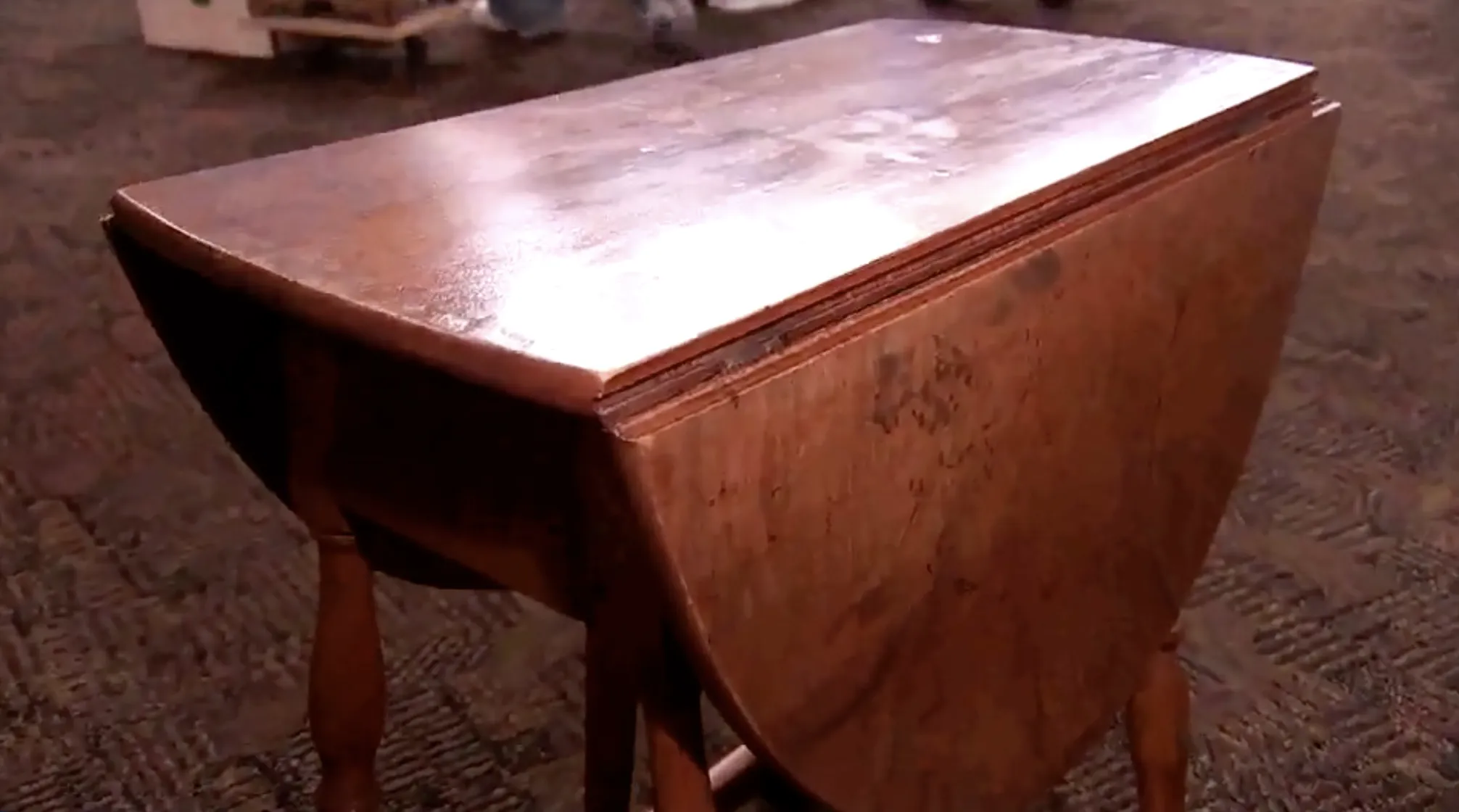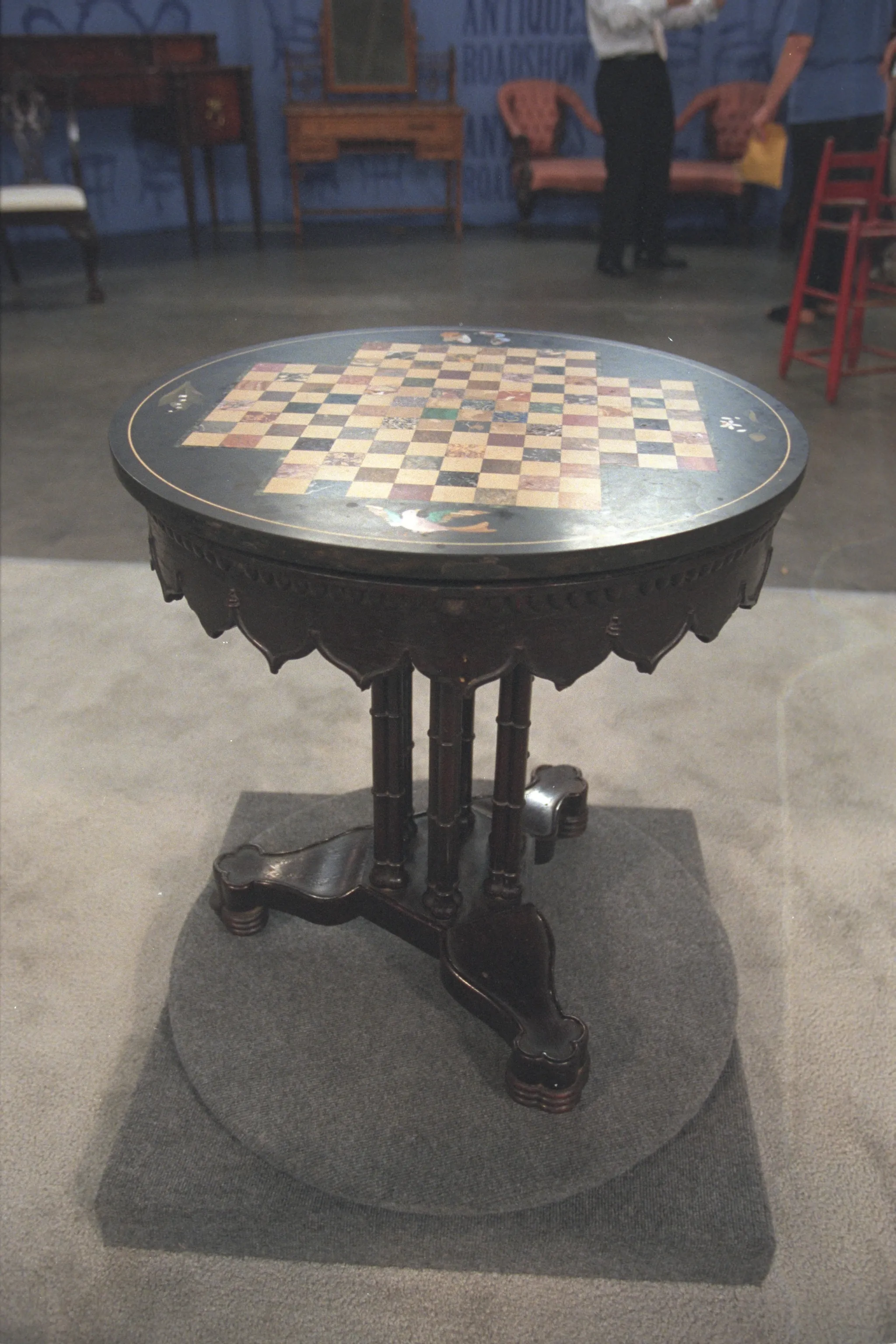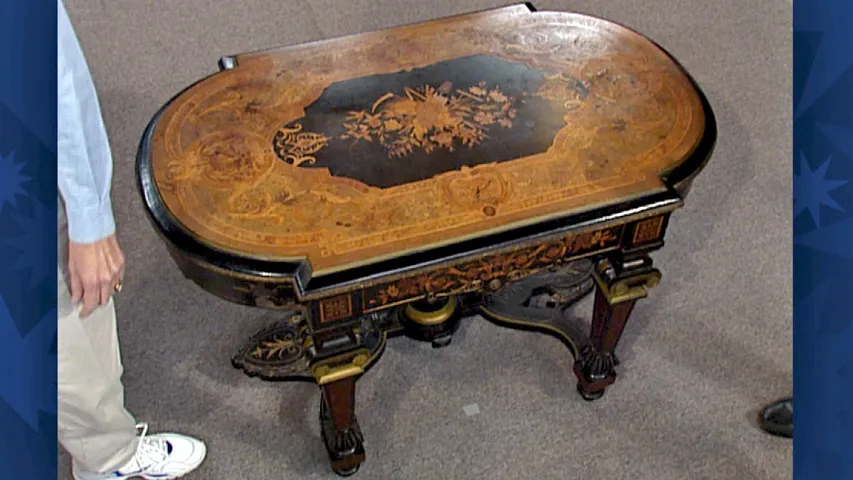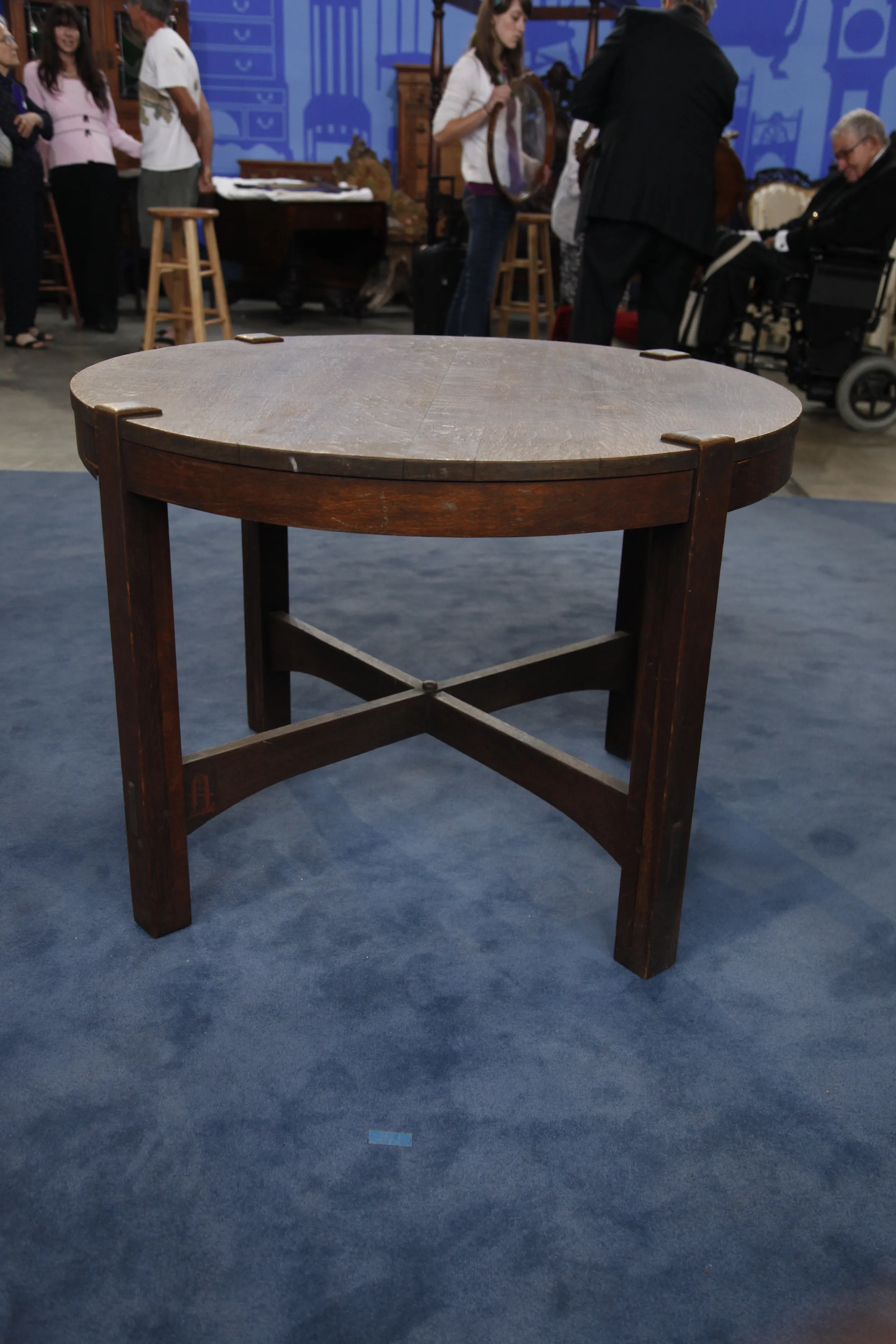GUEST: My mother-in-law was an antique dealer. She purchased the table... I cannot tell you how many years ago, I have no clue-- somewhere in, uh, South Texas or East Texas, and she said she purchased it from an elderly woman whose husband was a sea captain. And the story she told my mother-in-law said that the table dated-- and I don't remember what she told me-- either the American Revolution or the Civil War.
APPRAISER: Uh-huh.
GUEST: And she said the stains on the side are from whiskey, when they used it as a gaming table. We've had it 27 years.
APPRAISER: Uh-huh. I think this is more likely a library table.
GUEST: Yeah.
APPRAISER: Game tables have a tendency to be square. I would describe this as an Egyptian Revival table, and the reason being is that it has these wonderful pyramid bases, and it has heads of, uh, King Tut on it.
GUEST: Oh, really?
APPRAISER: Uh-- yes.
GUEST: Oh, is that what that-- okay.
APPRAISER: Yes.
GUEST: Okay.
APPRAISER: So we see the inlaid head of Tut. The Egyptian Revival, it can be three time periods: It can be early 19th century-- we see a lot of decorative arts with Egyptian motifs on them.
GUEST: Uh-huh.
APPRAISER: And then, in the late 19th century, it happens again. And then again, in the 1920s, there's another Egyptian Revival. And that's when King Tut's tomb is opened up...
GUEST: Uh-huh.
APPRAISER: And the whole world becomes mesmerized by these fantastic artifacts that are coming out of the, uh, Boy King's tomb-- King Tutankhamen. I think this table is from the 1920s. The craftsmanship on it is not as fine as I would expect to see on a table from the early 19th century. I think it's an American piece. One of the reasons I would say that is the woods in it-- there's mahogany, there's an oak, and there's also walnut. The person who made this understood construction, but they were not trained as a furniture maker. They were more likely a carpenter. The other aspect, obviously, is this wonderful pyramid effect.
GUEST: Mm-hmm.
APPRAISER: There's a central pyramid, and then two side pyramids split...
GUEST: Mm-hmm.
APPRAISER: ...as the supports...
GUEST: Mm-hmm.
APPRAISER: ...and then these great paw feet at the bottom, just like the Sphinx would have had. Let's turn it around and look at the other heads here. And you notice the eyes. They're glass, and they're probably taxidermy eyes. They're quite bright, and they really glow at you. I would say that a table like this, if I saw it in a shop, I would expect to pay around $8,500 for it.
GUEST: Oh, that's great.

